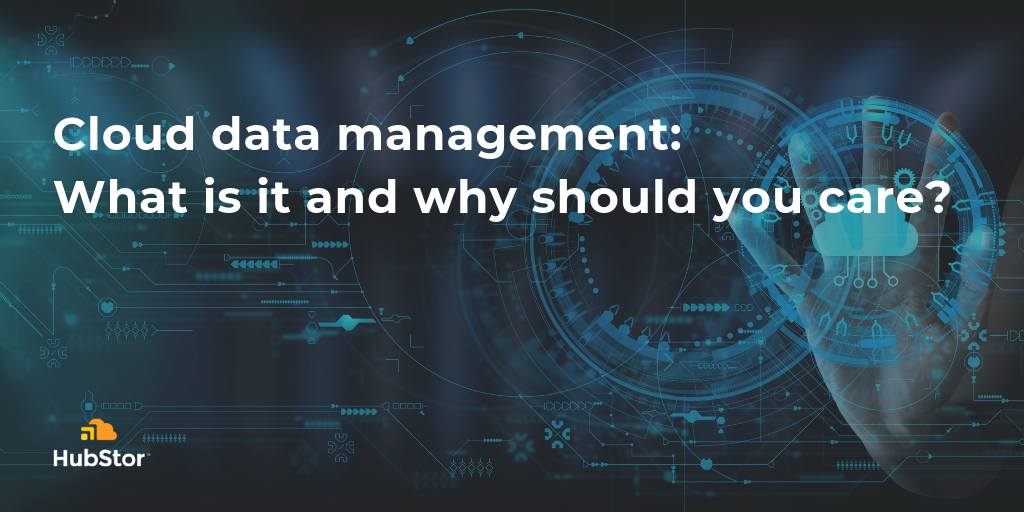Humans have been managing data in one form or another since we began recording it. The standards for handling data have evolved along with the perspective of information as an asset.
Today, we have sophisticated tools and systems at our disposal to meet complex needs around responsible data oversight. Effective data management is more important than ever with the growing volume of information that all organizations are generating.
What is data management?
Data Management Association International (DAMA) defines data management as “the development, execution and supervision of plans, policies, programs and practices that control, protect and enhance the value of data and information assets throughout their life cycles.”
Data management has a direct impact on organizations in numerous ways because it involves multiple mission-critical processes that address the lifecycle of information. From creation to deletion, data has to be accurately identified and stored based on internal retention policies, external compliance standards or other legal requirements.
The goal of data management is to ensure an organization’s information is available and accessible when it’s needed. That means having a secure, complete and searchable repository of organizational content to support business continuity, productivity, and compliance.
That’s no small task. But the cloud is making it easier.
How do organizations manage data?
You can break data management down into five big buckets of activities. They overlap in certain areas; however, there are distinct factors to consider in each group.
Backup and recovery
The whole purpose of having a backup of data is to prevent and/or recover from data loss. Even the least tech-savvy employee can recognize the value of a backup when they need a file restored. But today’s backup technology adds additional layers of value for organizations, starting with the cloud.
Having the flexibility to back up data from multiple sources (on-premises, SaaS) is key when you want to establish comprehensive data management practices. Cloud data management tools provide this, along with augmenting full-scale regular backups with incremental or continuous data protection so you can maximize protection of high-value data. The cloud offers easy-to-access offsite backups and encryption of data in motion and at rest.
Archive
Similar to backups, the cloud has made archiving easier and more flexible. Since data in archives is infrequently accessed and tends to remain largely unaltered (e.g., data from closed projects, retired applications, and former employees), the type of storage is different than a backup that’s being used to store and recover active data.
This is true with traditional data centers as well, but the cloud provides easy scalability and removes the costs of overhead and resources associated with establishing and maintaining an on-premises infrastructure footprint for archiving. The biggest advantage to cloud archival is the ability to search and retrieve data: The cost and effort are significantly reduced when compared to the same process with tape storage in traditional data centers.
Cloud tiering
For years, IT has used tiered storage to reduce the overall cost of storage. Higher cost, high-performance primary (hot) storage is used to house data that needs to be readily accessed. Lower cost, lower performance secondary (cold) storage is reserved for backups and archives. This storage takes longer to access, which makes it perfect for inactive data.
Cloud data management allows the same kind of storage optimization with cloud tiering to optimize cloud storage costs and put different categories of data in the appropriate type of storage. This gives IT greater flexibility in building out infrastructure to optimize apps and infrastructure on-premises, at the edge and in the cloud. It also allows for simplified storage migration and separates the data from the hardware.
Data governance
The application of an organization’s data governance strategy is well-suited to cloud data management tools. The rules and policies of how data is handled can be set up in a data management platform to execute.
The incorporation of classification, discovery, retention policies, and even chargeback tools gives IT greater agility in building the right infrastructure to execute data management activities within the data governance framework that’s been established.
Compliance
There’s a growing list of compliance mandates that organizations around the world are subject to when it comes to personal data, and retention of data related to work product, depending on the industry and the types of data being collected and used in a business. Virtually every sector is impacted by current and emerging compliance regulations.
Cloud data management gives organizations flexibility and scalability to meet these requirements head on. Whether it’s being able to retain data (journaling, instant messaging, SMS, call recordings) in write-once-read-many (WORM) compliant storage or search stored data efficiently to address right-to-be-forgotten requests via GDPR.
Data management is made easier in the cloud
One of the most helpful developments in data management is the ability to use cloud storage with a data management platform to more efficiently and effectively complete tasks that used to be handled entirely on premises. And when IT is freed up from monitoring and maintaining an on-premises data center, they can provide greater value to the business.




